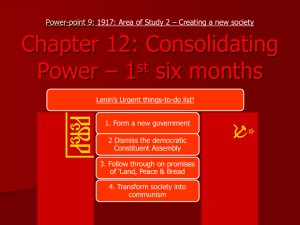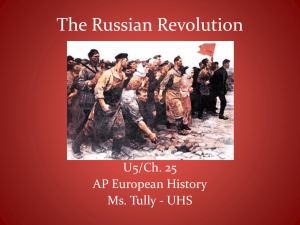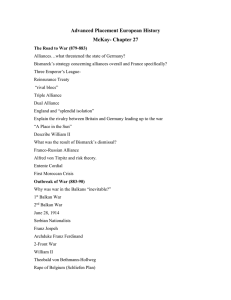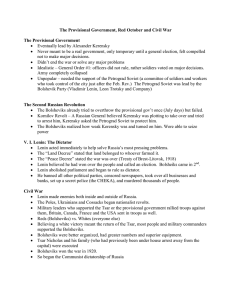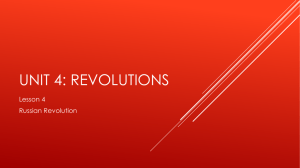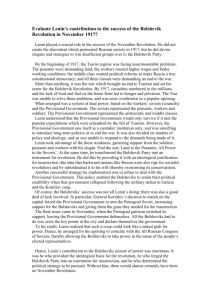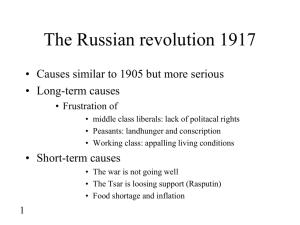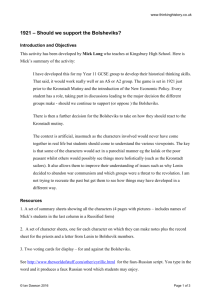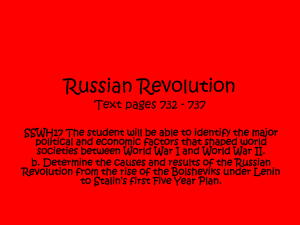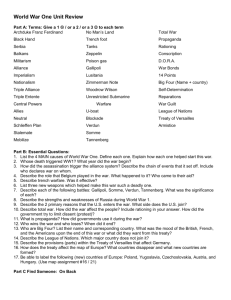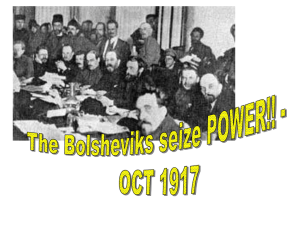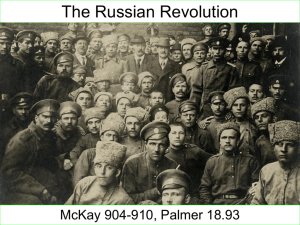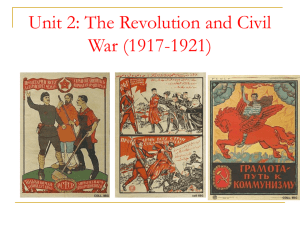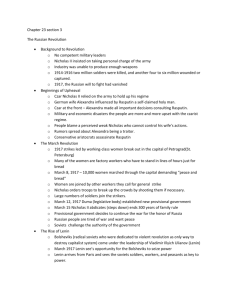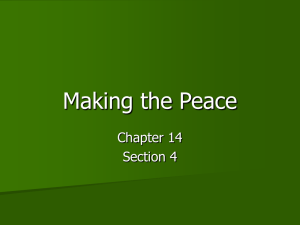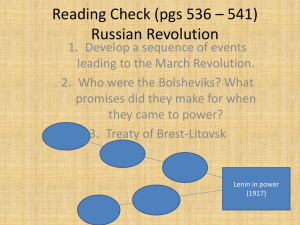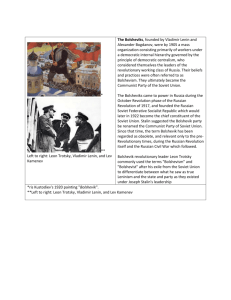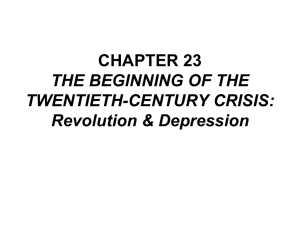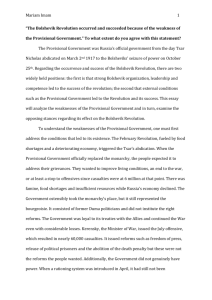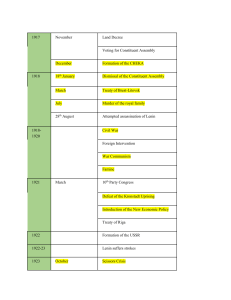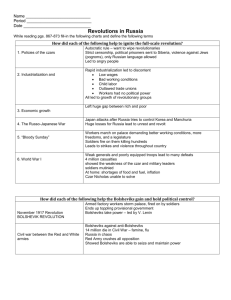25 Summary
advertisement
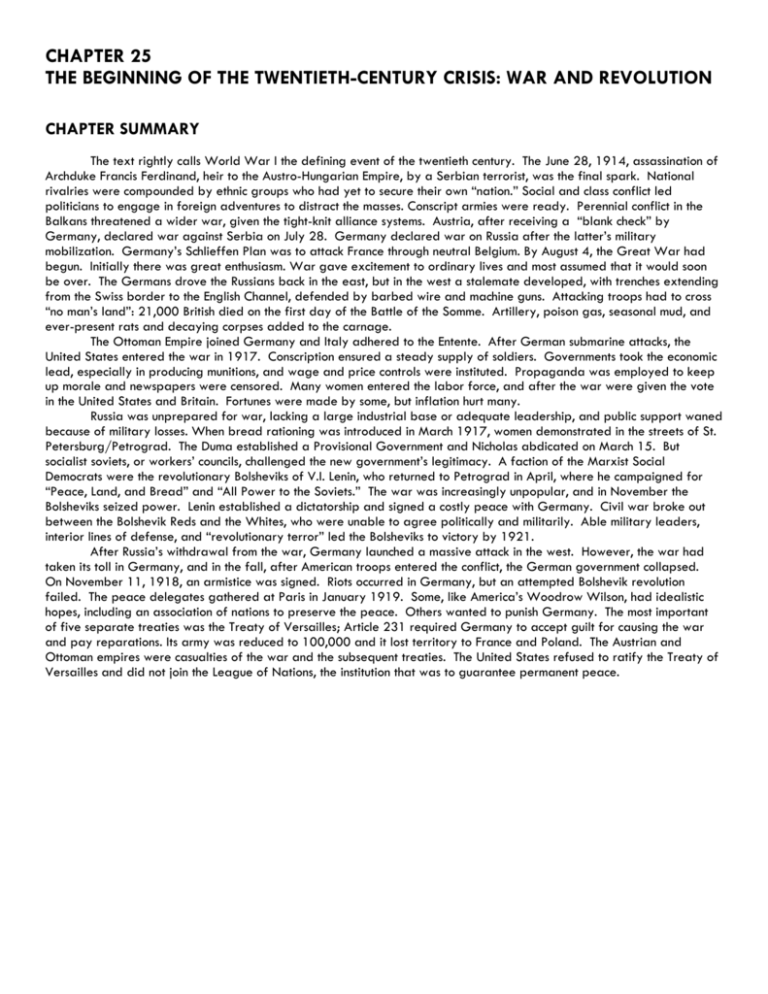
CHAPTER 25 THE BEGINNING OF THE TWENTIETH-CENTURY CRISIS: WAR AND REVOLUTION CHAPTER SUMMARY The text rightly calls World War I the defining event of the twentieth century. The June 28, 1914, assassination of Archduke Francis Ferdinand, heir to the Austro-Hungarian Empire, by a Serbian terrorist, was the final spark. National rivalries were compounded by ethnic groups who had yet to secure their own “nation.” Social and class conflict led politicians to engage in foreign adventures to distract the masses. Conscript armies were ready. Perennial conflict in the Balkans threatened a wider war, given the tight-knit alliance systems. Austria, after receiving a “blank check” by Germany, declared war against Serbia on July 28. Germany declared war on Russia after the latter’s military mobilization. Germany’s Schlieffen Plan was to attack France through neutral Belgium. By August 4, the Great War had begun. Initially there was great enthusiasm. War gave excitement to ordinary lives and most assumed that it would soon be over. The Germans drove the Russians back in the east, but in the west a stalemate developed, with trenches extending from the Swiss border to the English Channel, defended by barbed wire and machine guns. Attacking troops had to cross “no man’s land”: 21,000 British died on the first day of the Battle of the Somme. Artillery, poison gas, seasonal mud, and ever-present rats and decaying corpses added to the carnage. The Ottoman Empire joined Germany and Italy adhered to the Entente. After German submarine attacks, the United States entered the war in 1917. Conscription ensured a steady supply of soldiers. Governments took the economic lead, especially in producing munitions, and wage and price controls were instituted. Propaganda was employed to keep up morale and newspapers were censored. Many women entered the labor force, and after the war were given the vote in the United States and Britain. Fortunes were made by some, but inflation hurt many. Russia was unprepared for war, lacking a large industrial base or adequate leadership, and public support waned because of military losses. When bread rationing was introduced in March 1917, women demonstrated in the streets of St. Petersburg/Petrograd. The Duma established a Provisional Government and Nicholas abdicated on March 15. But socialist soviets, or workers’ councils, challenged the new government’s legitimacy. A faction of the Marxist Social Democrats were the revolutionary Bolsheviks of V.I. Lenin, who returned to Petrograd in April, where he campaigned for “Peace, Land, and Bread” and “All Power to the Soviets.” The war was increasingly unpopular, and in November the Bolsheviks seized power. Lenin established a dictatorship and signed a costly peace with Germany. Civil war broke out between the Bolshevik Reds and the Whites, who were unable to agree politically and militarily. Able military leaders, interior lines of defense, and “revolutionary terror” led the Bolsheviks to victory by 1921. After Russia’s withdrawal from the war, Germany launched a massive attack in the west. However, the war had taken its toll in Germany, and in the fall, after American troops entered the conflict, the German government collapsed. On November 11, 1918, an armistice was signed. Riots occurred in Germany, but an attempted Bolshevik revolution failed. The peace delegates gathered at Paris in January 1919. Some, like America’s Woodrow Wilson, had idealistic hopes, including an association of nations to preserve the peace. Others wanted to punish Germany. The most important of five separate treaties was the Treaty of Versailles; Article 231 required Germany to accept guilt for causing the war and pay reparations. Its army was reduced to 100,000 and it lost territory to France and Poland. The Austrian and Ottoman empires were casualties of the war and the subsequent treaties. The United States refused to ratify the Treaty of Versailles and did not join the League of Nations, the institution that was to guarantee permanent peace. Identifications: 1. No Man’s Land 2. Black Hand 3. Gavrillo Princip 4. Sarajevo 5. “blank check” 6. the Schlieffen Plan 7. First Battle of the Marne 8. Battles of Tannenberg and Masurian Lakes 9. trench warfare 10. Verdun and the Somme 11. the machine gun and poison gas 12. Central Powers 13. Lawrence of Arabia 14. the Lusitania 15. unrestricted submarine warfare 16 tanks 17. “total war” 18. Germany’s War Raw Materials Board 19. Britain’s Ministry of Munitions 20. Hindenburg and Ludendorf 21. Georges Clemenceau 22. Ireland’s Easter Rebellion 23. DORA 25. the Nineteenth Amendment 25. Nicholas II and Alexandra 26. Rasputin 27. Petrograd 28. “Peace, land, and bread” 29. soviets 30. Bolsheviks 31. V.I. Lenin 32. the “April Theses” 33. Alexander Kerensky 34. Treaty of Brest-Litovsk 35. Reds and Whites 36. Leon Trotsky 37. “war communism” 38. Alexandra Kollontai and the Zhenotdel 39. the Cheka 40. Second Battle of the Marne 41. November 11, 1918 42. Karl Liebknecht and Rosa Luxemburg and the Free Corp 43. Woodrow Wilson’s Fourteen Points 44. Treaty of Versailles 45. League of Nations 46. Article 231 47. reparations 48. “dictated peace” 49. Yugoslavia 50. League of Nations’ mandates
